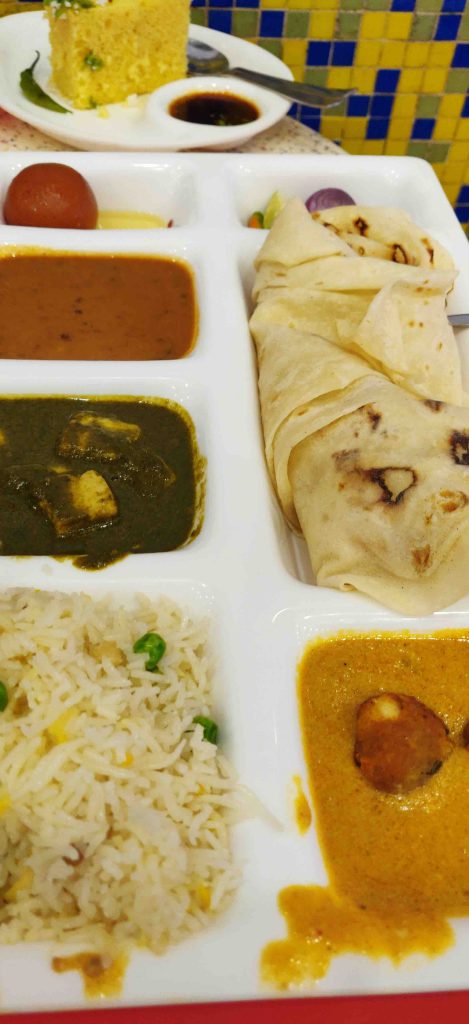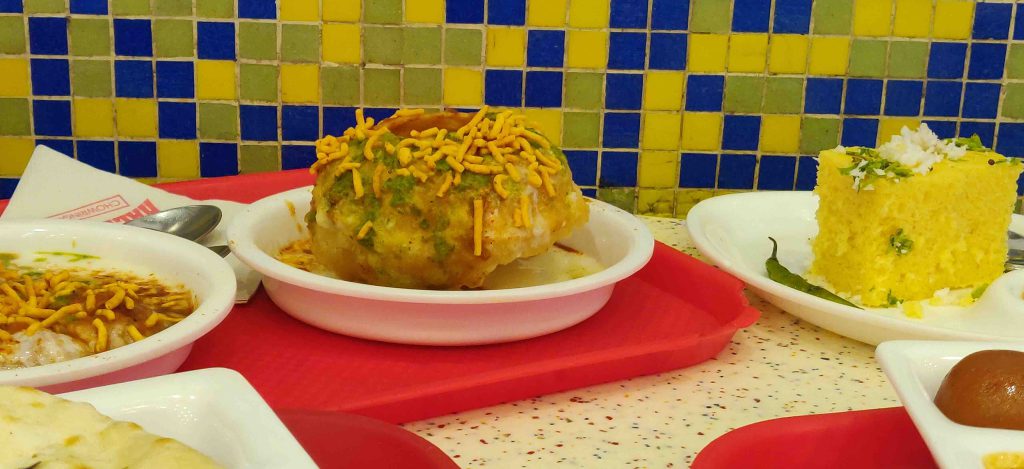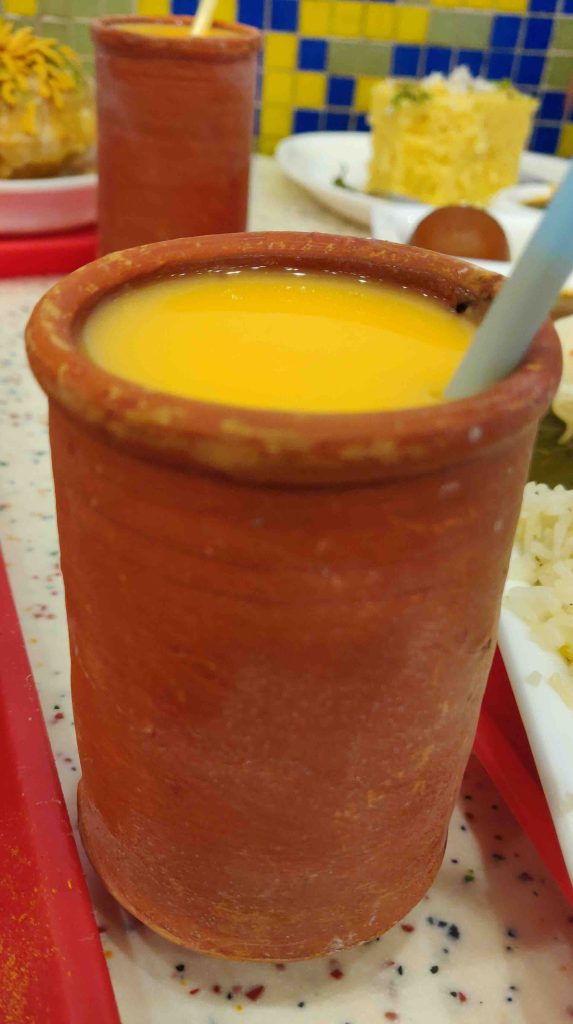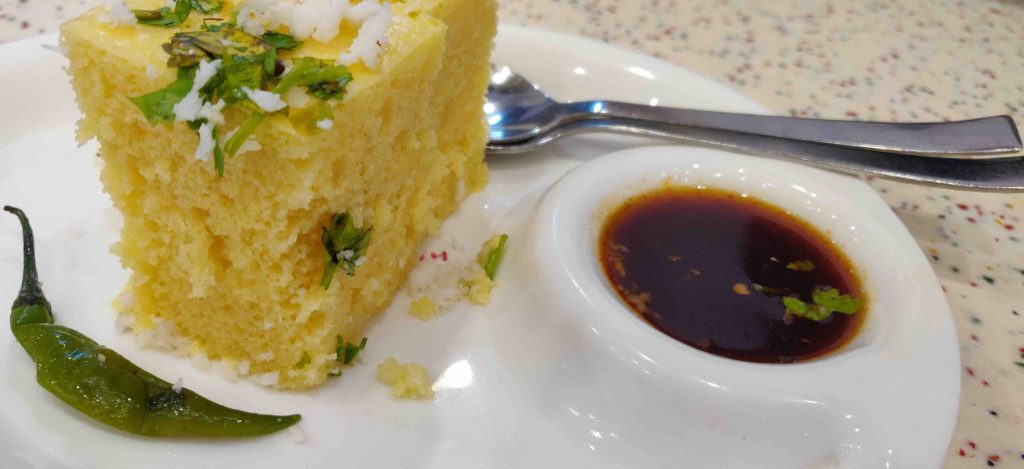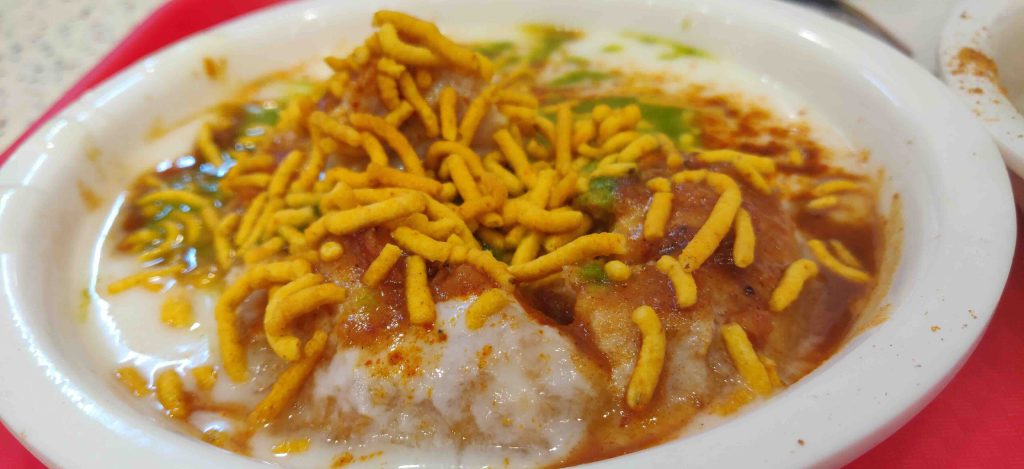The Victoria Memorial is a museum consisting of about 20 odd galleries with plenty of historical artefacts, and welcoming us was a statue of Robert Clive. The museum had a special focus on Bengal’s history from the European times on why they came in the 1500s attracted by the riches in the place (silk and spices), the Mughals permitting them to set up a settlement for trading and later constructing factories, etc.
There were weapons and ammunition from battles like the Battle of Plassey that happened in the 1750s, where the British East India Company under the leadership of Robert Clive defeated the Nawab of Bengal, who was supported by the French; they had on display artefacts like French guns that were captured by the victors.
The museum had a mix of photographs, drawings, and real artefacts, and in some cases, they tried to recreate scenes of life in Bengal (these did look pretty real and reminded me of the artisanship in pandals).
(the thumbnails may look a little blurry – click on them to see the original pic)
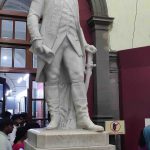
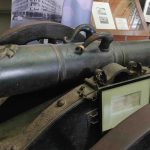
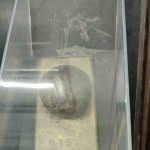
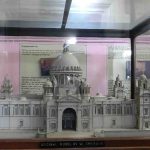
The 1900s is when the Victoria Memorial was constructed, and as the name suggests, it was dedicated to Queen Victoria. On the lawns of the Memorial, there is a statue of Queen Victoria where you’d find her holding 2 objects in her hands – one is the orb, which is supposed to signify the monarch’s power. The other one, I think, must be the sceptre. These are a part of the British monarchy, and the orb and sceptre were used even recently in the ceremony for Charles’ coronation.
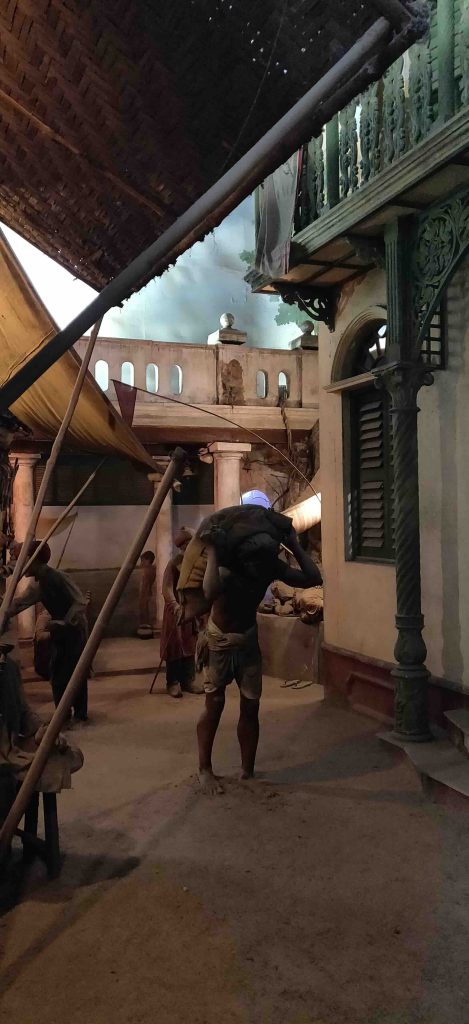
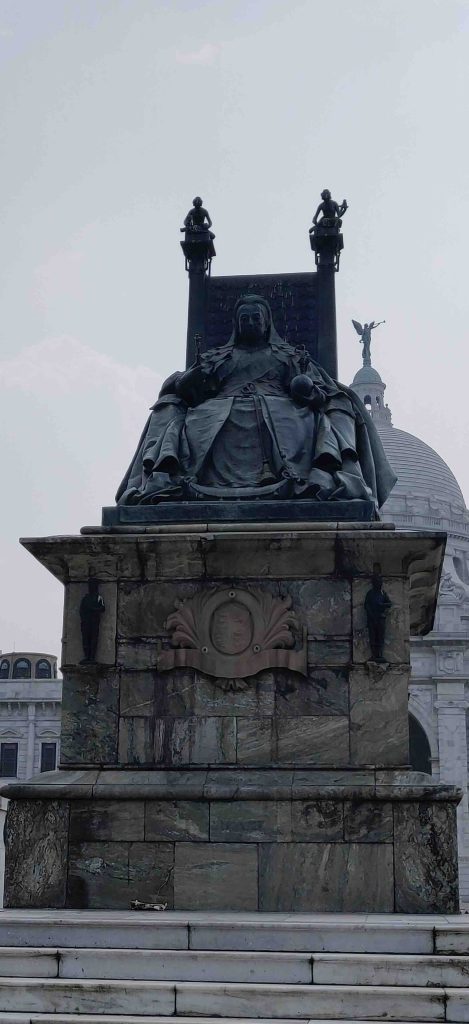
I found the galleries that had a storyline far more interesting than the ones where you had just a bunch of artefacts on display with just a name tag – like in the weaponry section, there were dozens of swords and guns stacked one beside the other. You just tend to gloss over these.
It was bright and sunny today, which didn’t help that we had to keep walking inside and outside most of the time. We spent about 90 minutes in the Memorial and left at 12:30.
Our next stop, the Indian Museum, was about 2.5 kilometres away – a walkable distance, but considering the sun, we decided to get a lift. We hopped onto a bus. Many of these buses were run by private companies – the tickets were odd – they reprinted the ticket on what seemed like used sheets of paper. And the buses also look pretty old – I guess they stick to the saying “Why fix something if it ain’t broke”! The bus was pretty empty, and we were surprised to hear a few passengers raise their voices; an argument ensued between them and the conductor – we didn’t know Bengali but could guess that it was about the stops – I think they wanted the bus to stop somewhere, but the conductor said it won’t.
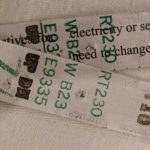
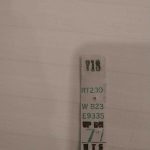
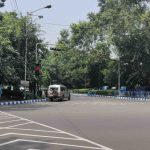
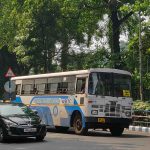
Deb met us at the Indian Museum, the same neighbourhood where we had been yesterday. We had to leave our bags on a counter before entering the museum.
Deb said, “This is India’s oldest and largest museum.”
They had multiple galleries spread over many floors.
We started in the mammal’s gallery, where we were welcomed by huge tusks. There were a ton of artefacts, but only a few artefacts had some descriptive information – most just had a name tag. I felt they could have set it up like a storyline – which would have made it more interesting to spend time looking and learning rather than people just breezing by. After a point, seeing so many small artefacts, one beside the other, makes the experience feel monotonous. There must have been so many untold stories related to these artefacts.
On the ground floor, we saw a board that said there was a mask gallery above – on each floor, it said that it was above; we had to climb many steps to finally get to the 4th floor to see it! It housed different types of masks used in Bengal and other parts of the country – some were colourful, some scary, some like the face of Gods and some with animal faces. This gallery had a nice ambience but, again, needed a story.
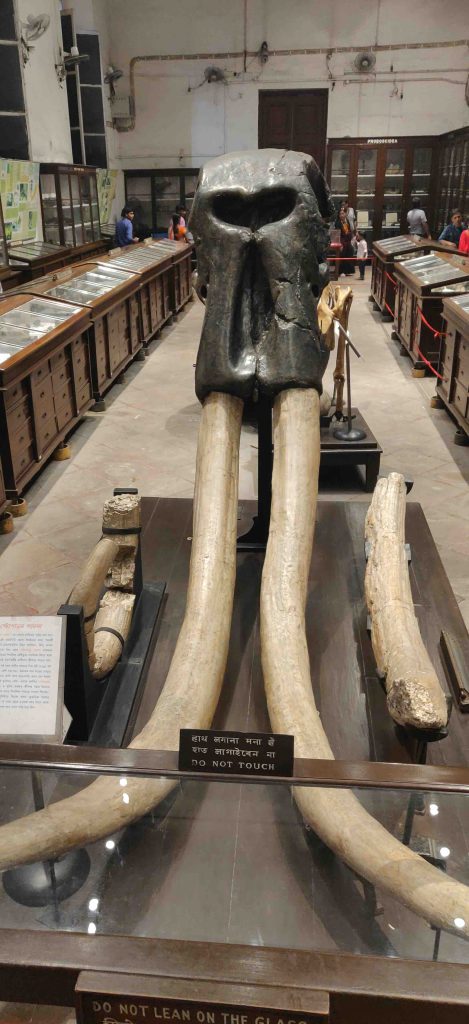
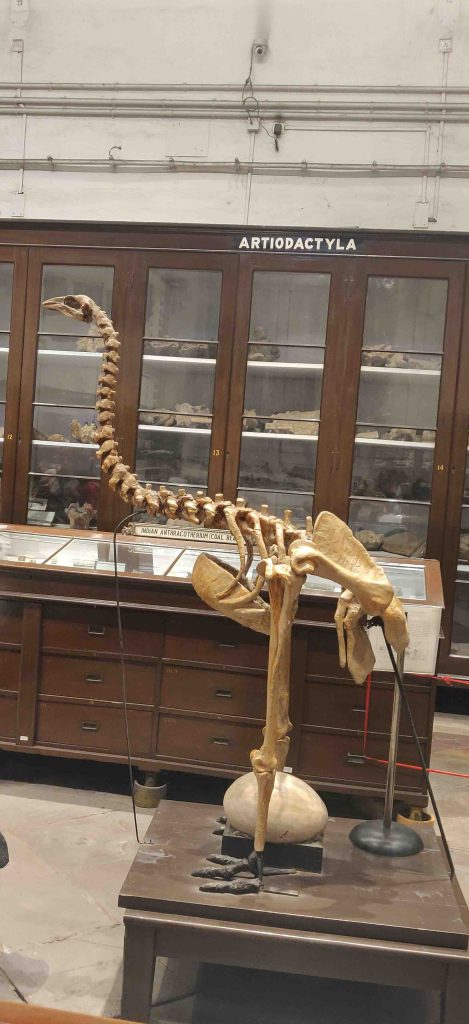
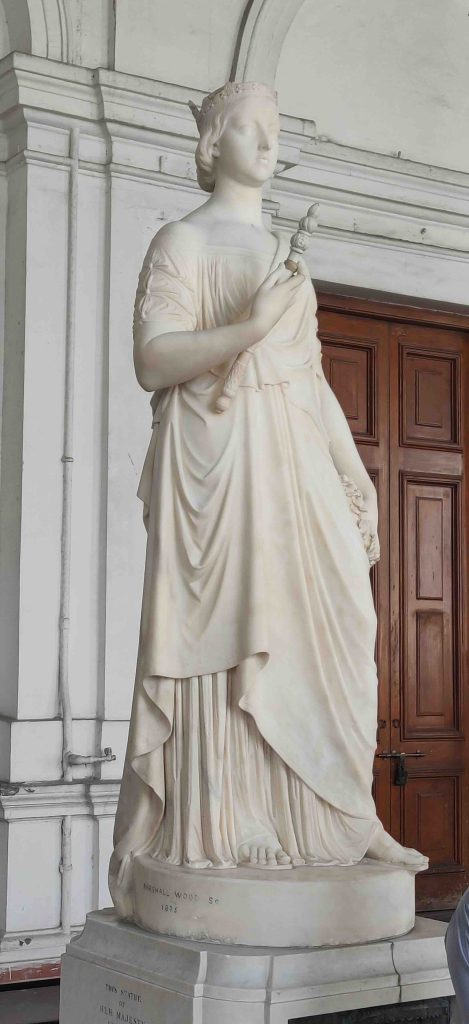
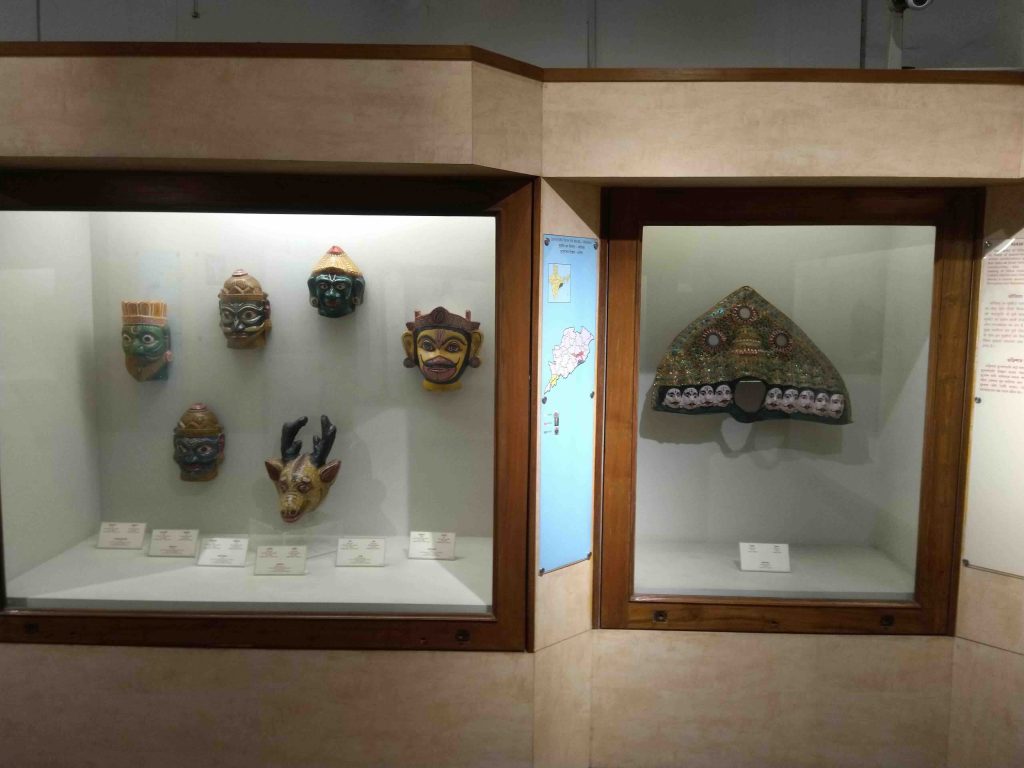
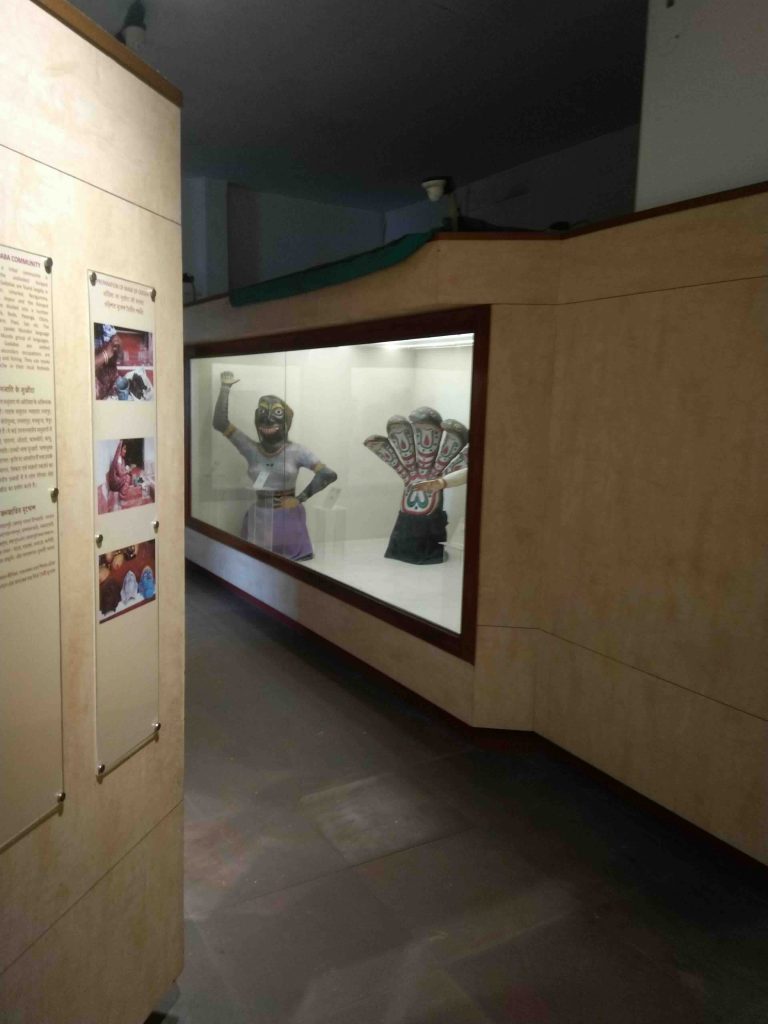
“The Egyptian gallery will be good. They got a real mummy there,” Deb said as he led us to it. I guess the lights were very dim here to prevent any damage from happening to the mummy, and photography was also not permitted. This gallery had more descriptions for the artefacts and was probably the better-presented gallery in the museum.
When we left the Indian museum, I wondered about content vs presentation/marketing/storytelling. In the corporate world, we often see cases where there is very little content, but the presentation of that is done in such a way that, for an outsider, it would seem very impressive. Over here, it was the reverse – tons of content but no presentation or packaging.
At 2 pm, we were in Haldiram’s Food City.
“Best place for veg food,” Deb said.
I had a mental impression that Haldiram would be a chaat shop, so I expected a small outlet. But the place was huge with a couple of floors and still crowded. We managed to find a free table. We ordered their thalis (sort of a set lunch with fixed dishes on each plate); they are famous for chaat dishes as well, and so we ordered a few of those too – dhoklas, raj kachori, dahi chaat, kesar lassi. This is a quick-service restaurant, and we spent less than an hour there. Pretty filling meal.
